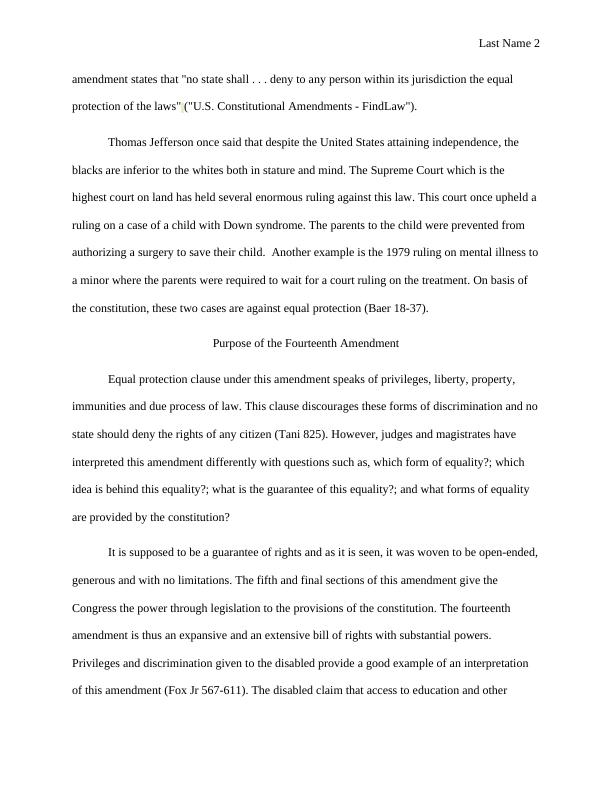The Law of Equality: The Fourteenth Amendment
Added on 2023-05-28
4 Pages1060 Words422 Views
End of preview
Want to access all the pages? Upload your documents or become a member.
Equal Protection Clause and its Application in MSU and LAPD Policies
|6
|1196
|354
Assignment-Consideration Of Race Of Applicants In Public University US
|6
|3149
|134
Final Exam - GOV 353.OL1
|4
|1814
|123
Administrative Law and Due Process Clauses for Disability Benefits
|5
|729
|186
The Due Process Clause in the Constitution of United States
|4
|652
|195
Civil Law: Adoption Rights for Homosexual Couples in New York
|9
|2672
|75

